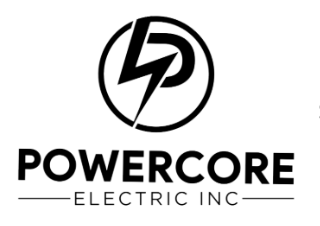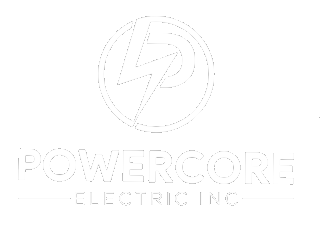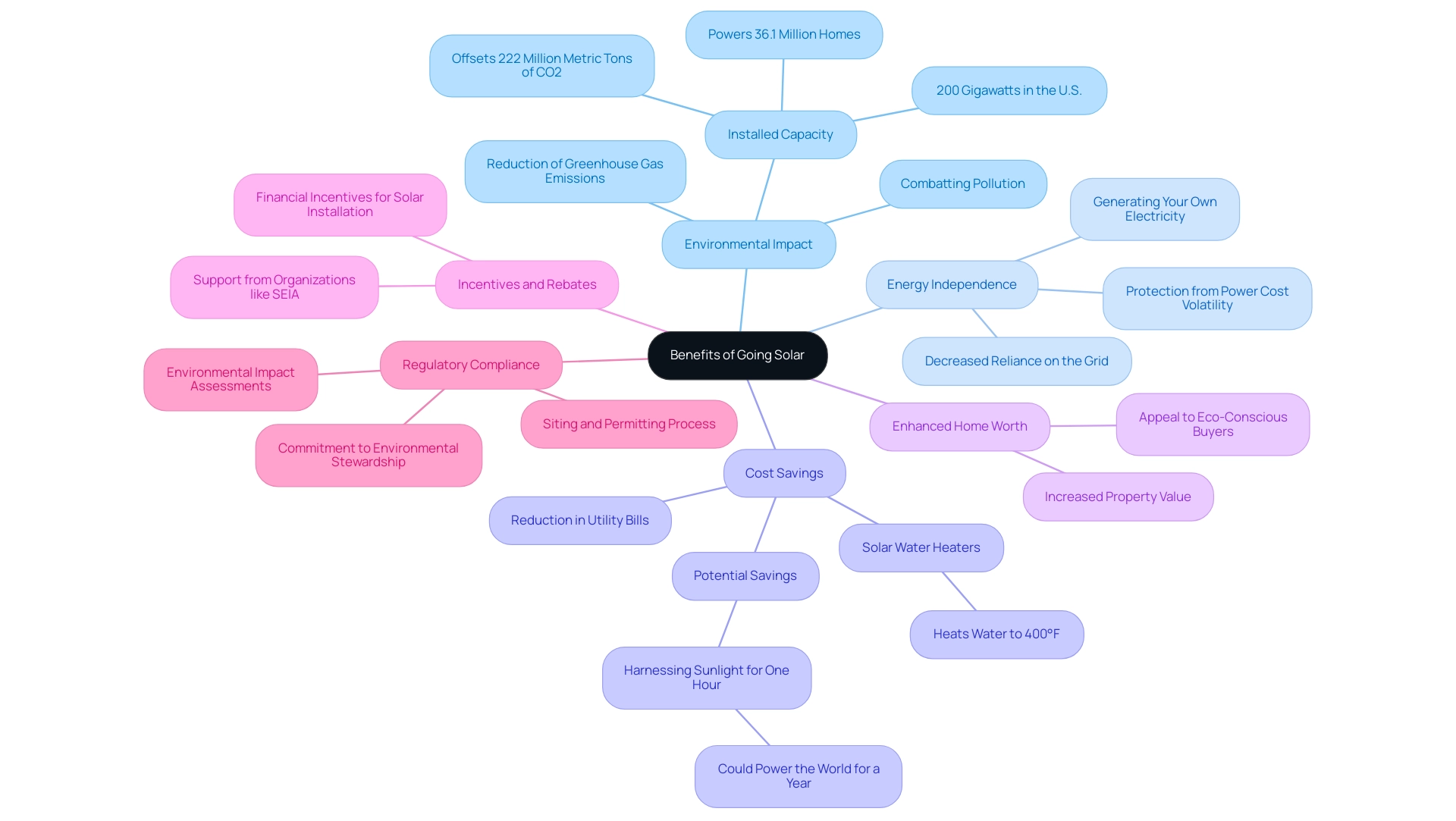Introduction
Considering a leap into solar energy can feel like a daunting task, but it opens up a world of possibilities for homeowners looking to embrace sustainability and save on energy costs. From assessing your home’s solar potential to navigating the installation process, understanding the costs involved, and choosing the right installer, each step is crucial in making informed decisions.
With the sun shining brightly over Roseville, homeowners have a unique opportunity to harness renewable energy, enjoy significant savings, and contribute to a cleaner environment. This guide will walk through the essential factors to consider, ensuring a smooth transition to solar power while highlighting the benefits that come with this green investment.
Assessing Your Home’s Solar Potential
Evaluating your home’s sunlight potential is an exciting initial step towards adopting renewable resources and accessing the advantages provided by government panel initiatives. Here are some key factors to consider:
-
Roof Orientation and Angle: Ideally, south-facing roofs capture the most sunlight.
If your roof has a slope that maximizes exposure, you’re already ahead of the game!
-
Shading: Take a stroll around your property to check for any trees, buildings, or other structures that could cast shadows on your roof during the day. Instruments such as pathfinders can be a clever method to visualize how sunlight interacts with your space.
-
Energy Consumption: Dive into your energy bills to get a clearer picture of your current usage. This insight will help you estimate the size of the celestial system that would best meet your needs.
-
Local Climate: Residing in Roseville means you’re fortunate to enjoy a sunny climate, which is ideal for solar installation in Roseville, CA, but remember that seasonal changes can influence energy efficiency.
Examining the average sunlight hours in your area will provide you with a clearer understanding of your energy potential.
-
Home Structure: Ensure your roof is in excellent condition and can support the weight of photovoltaic panels. If you notice any repairs that require attention, address those before proceeding with installation.
Additionally, understanding how photovoltaic panels function is crucial. Solar panels convert sunlight into electricity using photovoltaic cells. When sunlight hits these cells, it generates direct current (DC) electricity, which is then converted into alternating current (AC) electricity by an inverter, making it usable for your home.
This procedure enables you to lessen dependence on conventional power sources and may result in considerable savings on your utility bills.
Furthermore, national laboratories and private firms have created innovative tools to assess sunlight installation capability for individual rooftops, partly financed by the U.S. Department of Energy’s Solar Energy Technologies Office (SETO). These tools help consumers in assessing their sunlight capacity, making it easier to start the process of choosing renewable power solutions.
For additional assistance, property owners can consult user manuals and detailed guides accessible online that describe the steps for evaluating renewable possibilities and using government programs effectively.
By carefully considering these elements and comprehending the operation of photovoltaic panels, you’ll be well-prepared to assess if your residence is a suitable candidate for renewable power and what type of system would be most beneficial for you. Keep in mind, with an average of 3.3 million residences needing roof replacements each year, there’s a significant chance to utilize approximately 30 gigawatts (GW) of renewable energy capacity annually. As Birk Kraas observes, ‘Comprehending the subtleties of sunlight capacity evaluation is essential for making informed choices regarding your energy future.’
Moreover, it’s essential to compare different databases, as their performance can differ regionally due to various factors, ensuring you have the most precise evaluation of your home’s energy capability.
Navigating the Solar Installation Process: Permits and Inspections
When you’re preparing for your energy installation, it’s important to navigate the permit and inspection landscape smoothly. Roseville’s climate and geographical position render it highly appropriate for solar installation in Roseville, CA, with significant energy production potential. Here’s a friendly guide to help you through the process:
- Research Local Regulations: Start by checking in with the city of Roseville, CA about the specific regulations for solar installation in Roseville, CA. Each municipality can have its own set of rules, so it’s crucial to know what applies to you.
- Obtain Necessary Permits for solar installation roseville ca: Generally, you’ll need to secure building and electrical permits related to the solar installation. The good news? Your installer at Powercore Electric can often take the reins on this, ensuring all paperwork is submitted accurately and on time. They can also assist with any necessary upgrades, such as installing a multi-register meter, to avoid additional costs.
- Schedule Inspections: After your photovoltaic panels are installed, local authorities will require inspections to ensure everything meets safety standards. This may involve checking the roof structure and electrical connections, so be prepared for this step. As highlighted in the case study titled “Turning on the DG System,” the customer must wait for the signed green card verification before receiving the Permit to Operate notification from the Utility, emphasizing the importance of compliance with operational protocols.
- Final Approval: Once everything checks out and you pass your inspections, you’ll receive a final approval from the city. This is your green light to start harnessing the power of the sun with your new solar installation in Roseville, CA!
By familiarizing yourself with these steps, you can ensure that your installation meets all necessary regulations and is ready for operation without any hiccups. Remember, as Aaron Robinson expressed,
Just like the sun energizing PV panels, coffee is our liquid sunshine that fuels our research and development shenanigans! So keep that spirit alive as you embark on your journey into renewable energy!
If you’re seeking comprehensive energy solutions, including battery backups, EV charging stations, and roofing enhancements to safeguard your home, feel free to contact Powercore Electric at ryan.serrano@powercoreinc.net or call us at (916) 699-8778 for personalized advice and assistance.
Understanding Costs and Financing Options for Solar Installation
Navigating the costs and financing options for photovoltaic installations in Sacramento and Northern California can feel overwhelming, but breaking it down into manageable parts makes it simpler. Here’s what you need to know:
-
Installation Costs: In Northern California, the average price for residential photovoltaic systems typically falls between $15,000 and $25,000.
This range can vary based on the size and complexity of the system you choose. To ensure you’re getting the best deal on solar installation Roseville CA, it’s wise to gather multiple quotes from reputable installers in your area, including some of the leading renewable energy providers like Sunrun, Tesla Energy, and Vivint Solar, known for their quality and service.
-
Incentives and Rebates: Don’t forget to explore the various incentives available that can significantly lessen your upfront costs.
The federal renewable energy tax credit allows you to deduct 26% of your installation expenses from your federal taxes. Furthermore, California provides various state incentives like the Residential Clean Energy Tax Credit, DAC-SASH for low-income customers, and PACE financing, aimed at assisting homeowners in accessing renewable resources at a lower cost. Local government programs also exist, such as the California Initiative for Renewable Energy, which supports energy adoption.
-
Financing Options: There are several financing routes available to make solar energy more accessible:
- Solar Loans: These are low-interest loans tailored specifically for solar installations, helping homeowners spread the cost over time.
- Leases: With a lease agreement, you can pay a monthly fee to utilize a solar system installed on your property without the burden of ownership.
- Power Purchase Agreements (PPAs): This option allows you to pay for the energy produced by the solar system rather than the system itself, which can be a more manageable way to integrate solar power into your home.
-
Long-term Savings: It’s essential to consider the potential savings on your utility bills. Numerous homeowners indicate a return on investment within 5 to 10 years, largely reliant on local utility rates and personal consumption patterns.
In fact, California’s photovoltaic panels can offset electricity by 107%, highlighting their effectiveness. As indicated by specialists, California has more photovoltaic panels set up than any other state, supplying sufficient renewable power to energize nearly 14 million residences as of 2024. This trend highlights the reliability and increasing adoption of renewable energy solutions.
Additionally, EnergySage has created a marketplace with funding from the U.S. Department of Energy to make clean residential energy solutions more affordable and accessible, providing further support for property owners considering such options.
By grasping these financial components and understanding the benefits and drawbacks of options like panel shingles and Tesla chargers, you can make informed decisions that fit both your budget and your energy aspirations, paving the way for a more sustainable future.
Choosing the Right Solar Installer in Roseville
Selecting the right installer for renewable energy is a crucial step in your journey towards a sustainable home. Here are some friendly tips to help you make an informed decision:
-
Research Credentials: Begin by seeking installers with certifications from reputable organizations like the North American Board of Certified Energy Practitioners (NABCEP).
These certifications signal a commitment to professionalism and expertise, ensuring you’re in good hands.
-
Read Reviews and Testimonials: Dive into online reviews and don’t hesitate to ask for references from previous customers. Positive feedback from fellow homeowners, including praise for Powercore Electric’s fast, efficient service and commitment to staying on schedule, can provide valuable insights into the installer’s reliability and quality of work.
-
Obtain Multiple Quotes: It’s wise to gather quotes from at least three different installers. This practice allows you to compare pricing, services offered, and warranty terms, helping you find the best fit for your needs.
-
Evaluate Customer Service: Pay attention to how responsive and helpful the installer is during your initial consultation.
Good communication is essential for a successful project, so choose someone who listens and addresses your concerns.
-
Check Warranty and Maintenance Options: Make sure to thoroughly understand the warranty provided on both the panels and the installation work. A robust warranty often reflects the installer’s confidence in their services, giving you peace of mind.
As you consider your options, remember that California’s ambitious scoping plan aims for gigawatts of small-scale renewable energy capacity by 2045, nearly doubling the current level. This goal not only highlights the growth potential in the renewable energy sector but is also anticipated to generate over 12,000 new jobs for photovoltaic installers by 2033. Furthermore, insights from recent reports emphasize trends in the California residential rooftop photovoltaic market, including significant factors influencing installation rates, which can guide your decision-making process.
Taking the time to select the appropriate installer, like Powercore Electric, who proudly serves their communities, can result in a smooth installation process and a high-quality system that perfectly meets your power requirements. With California at the forefront of distributed generation, now is a fantastic time to consider energy solutions for your residence, including options like Tesla vehicle chargers and various government programs designed to support property owners in their energy journey.
The Benefits of Going Solar: Environmental and Economic Advantages
Transitioning to renewable power provides access to numerous advantages that can change your residence and community. Here are some key advantages to consider:
-
Environmental Impact: Solar power stands out as a clean, renewable resource that significantly reduces our reliance on fossil fuels.
By harnessing the sun’s power, you help decrease greenhouse gas emissions and combat pollution—a crucial step in preserving our planet for future generations. In fact, the U.S. has over 200 gigawatts of installed photovoltaic electric capacity, enough to power more than 36.1 million homes and offset over 222 million metric tons of carbon dioxide emissions. This demonstrates the significant effect renewable power can have on our environment.
-
Energy Independence: Imagine generating your own electricity! By utilizing solar installation Roseville CA to set up photovoltaic panels, you can manage your power requirements, decreasing reliance on the grid and protecting yourself from the volatility of power costs. This independence fosters a sense of security and stability in your household.
-
Cost Savings: One of the most attractive features of sunlight-powered systems is their potential for substantial cost reductions. Many homeowners claim that solar installation in Roseville, CA allows them to save hundreds to thousands of dollars on their utility bills each year. Additionally, with the integration of solar water heaters, which can heat water to temperatures as high as 400 degrees Fahrenheit and utilize sunlight efficiently, you can further decrease utility expenses.
Actually, if we could harness all of the sun’s power shining on the Earth for just one hour, we could supply the whole world for an entire year. That’s the remarkable capability we’re dealing with!
-
Enhanced Home Worth: Residences outfitted with renewable energy systems not only benefit from reduced utility expenses but frequently experience an increase in property value too.
This makes your residence more appealing to prospective buyers, particularly those interested in solar installation in Roseville, CA, who are increasingly seeking eco-friendly features in their next home.
-
Incentives and Rebates: There are numerous financial incentives available to help offset the cost of solar installation in Roseville, CA, making renewable sources more accessible than ever.
These programs, including those for water heaters that harness sunlight, along with the potential savings on your utility bills, make investing in this energy source a smart financial decision.
Organizations like SEIA support comprehensive climate and power legislation, emphasizing the importance of policies that promote clean power.
-
Regulatory Compliance: The siting and permitting process for renewable energy projects involves evaluating multiple sites and designs, assessing environmental impacts in compliance with laws and regulations.
This process not only aims to improve decision-making and reduce non-hardware costs of solar development but also ensures healthy surrounding ecosystems, highlighting the commitment to environmental stewardship.
By embracing these benefits, including the advantages of solar water heaters, you can feel confident in your choice to pursue solar energy.
It’s not just a sustainable option; it’s an economically sound investment that contributes to a healthier planet and community.
Conclusion
Embracing solar energy is not just a step towards sustainability; it’s a transformative journey that offers both environmental and economic benefits. By assessing your home’s solar potential, understanding the installation process, and exploring financing options, homeowners can confidently navigate the transition to solar power. Each step—from evaluating roof orientation to securing necessary permits—plays a vital role in ensuring a successful solar installation.
The financial incentives available make solar energy more accessible than ever, allowing homeowners to enjoy significant savings on energy bills while contributing to a cleaner environment. With California leading the charge in solar adoption, the time to invest in solar solutions is now. Choosing a reputable installer ensures that the transition is smooth and that the system installed meets your specific energy needs.
Ultimately, going solar represents a commitment to energy independence and a cleaner future. By harnessing the sun’s power, homeowners not only reduce their carbon footprint but also enhance the value of their properties. This investment in solar energy is not just a choice for today; it’s a legacy for future generations—a step towards a sustainable and economically sound future for all.



